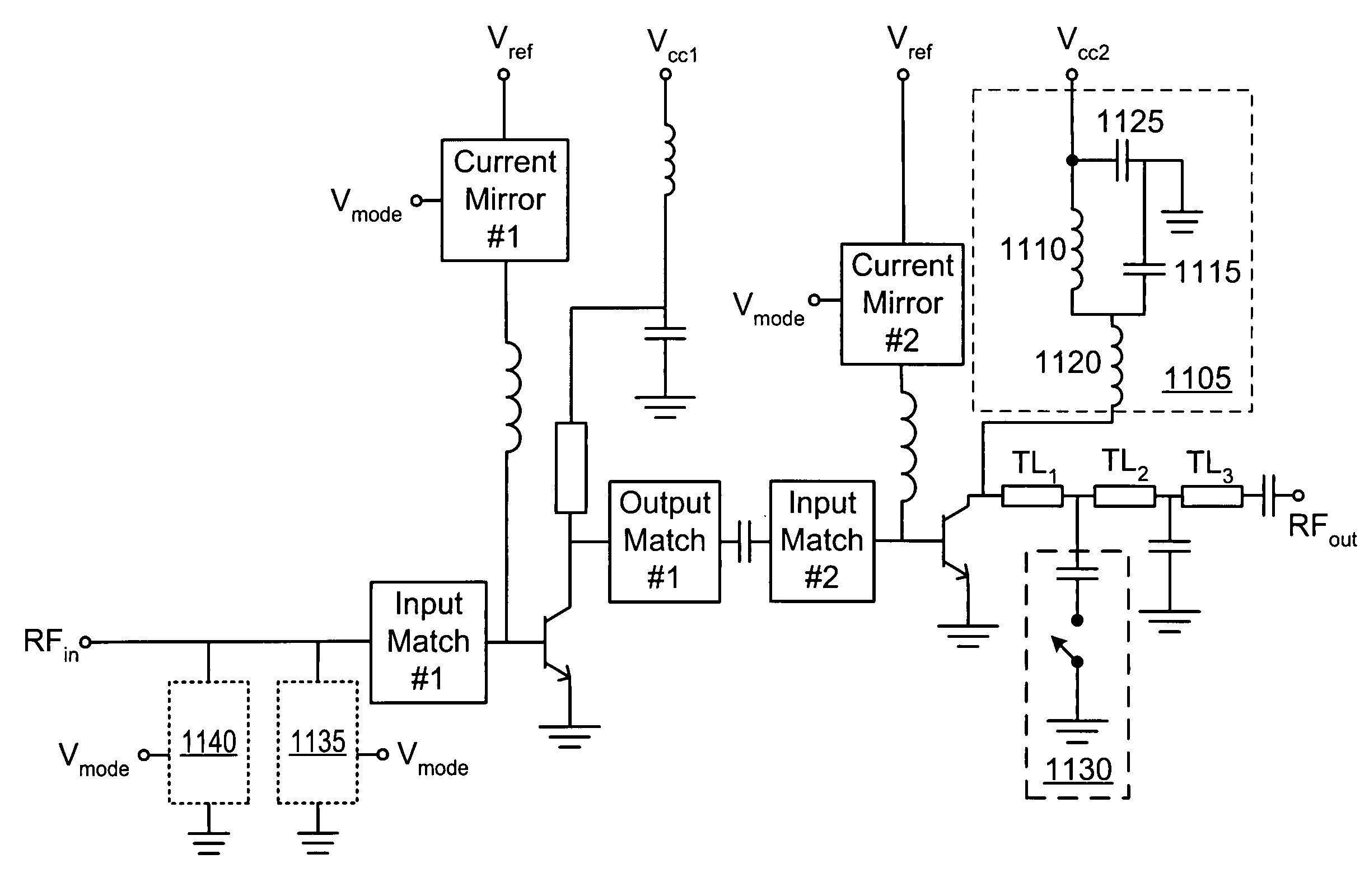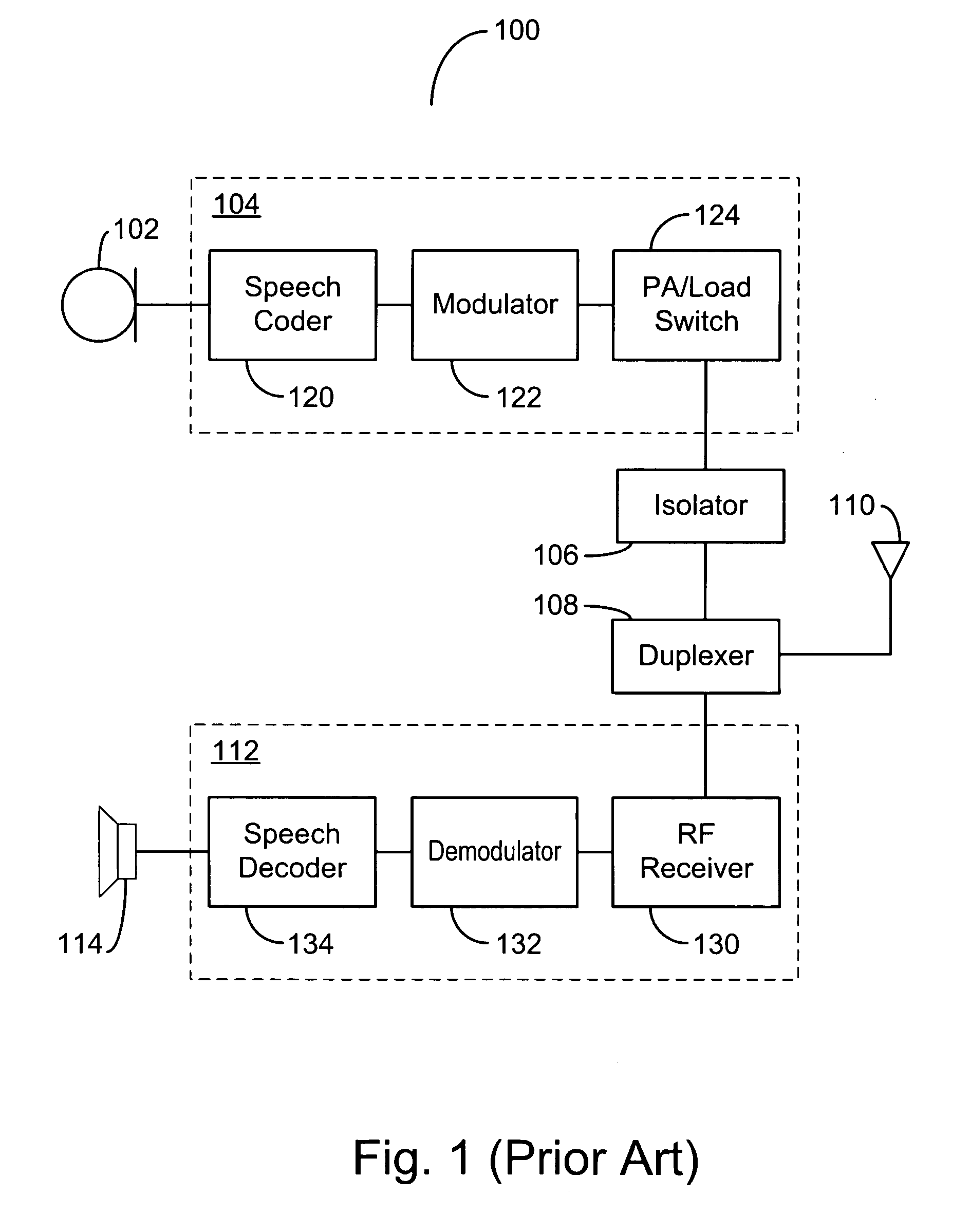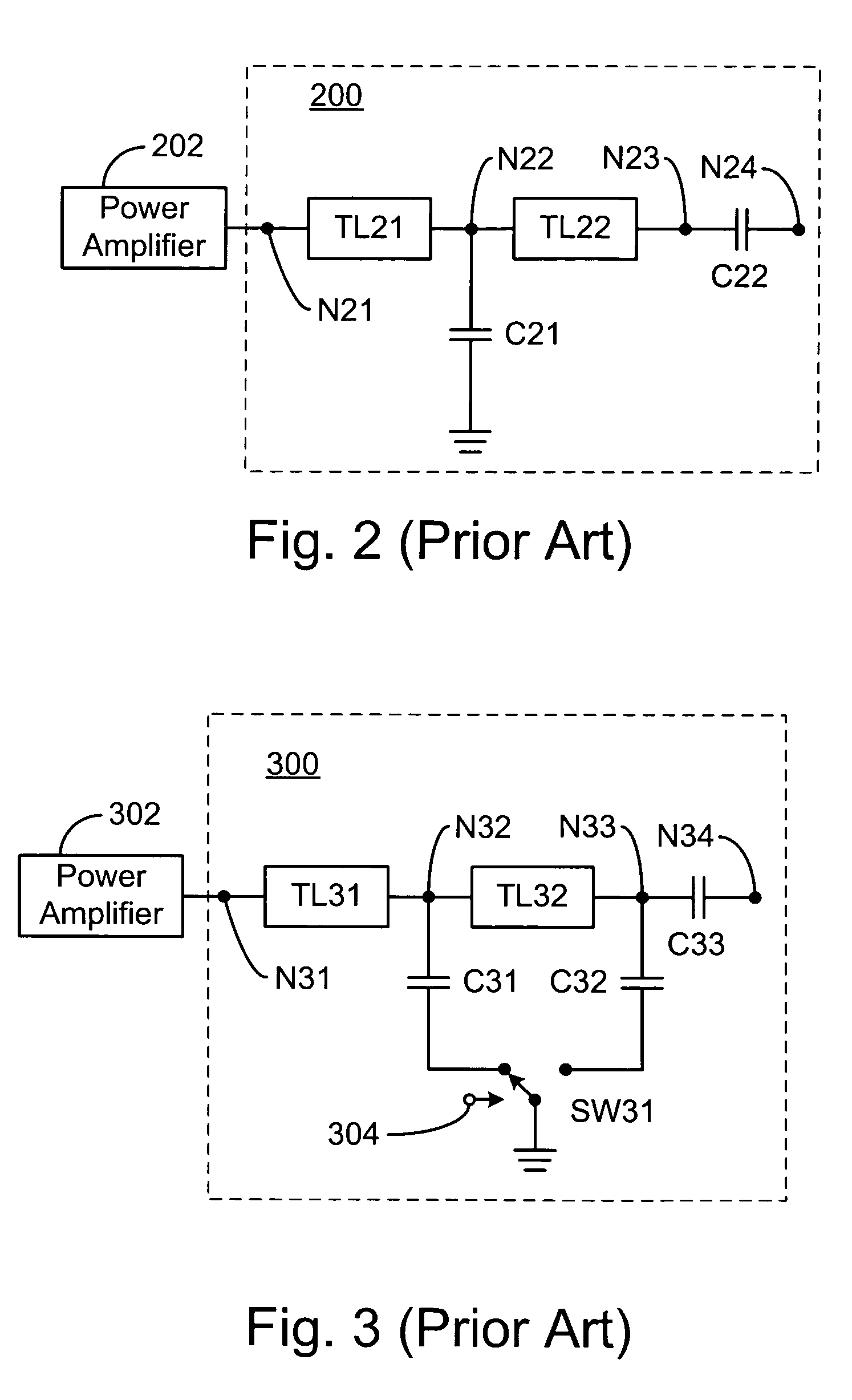CDMA power amplifier design for low and high power modes
a power amplifier and low power mode technology, applied in the direction of amplifier combinations, high frequency amplifiers, gain control, etc., can solve the problems of low power mode response, low power mode operation, etc., to improve the response in hp mode, improve the performance of the power amplifier, and reduce the loss of insertion
- Summary
- Abstract
- Description
- Claims
- Application Information
AI Technical Summary
Benefits of technology
Problems solved by technology
Method used
Image
Examples
Embodiment Construction
[0062]FIG. 4 shows power amplifier 400 in accordance with the present invention. Power amplifier 400 can serve as the power amplifier portion of power amplifier / load circuit 124 seen in FIG. 1. An RF signal input to power amplifier 400 at input node N41 may be phase shifted by phase shift circuit 402, first amplifier stage 404, and second amplifier stage 406, before exiting at output node N50.
[0063]Phase shift circuit 402 helps minimize phase discontinuity when switching between HP and LP modes in order to preserve phase coherency of the output signal. The RF signal at output node N42 is phase shifted relative to the signal at input node N41 depending on the Vmode signal.
[0064]As is known to those skilled in the art, the Vmode signal is a voltage level controlled by a dictated controller, such as a processor or the like, belonging to the device in which the power amplifier is resident. In the present invention such a controller (not shown) changes the value of the Vmode signal whene...
PUM
 Login to View More
Login to View More Abstract
Description
Claims
Application Information
 Login to View More
Login to View More - R&D
- Intellectual Property
- Life Sciences
- Materials
- Tech Scout
- Unparalleled Data Quality
- Higher Quality Content
- 60% Fewer Hallucinations
Browse by: Latest US Patents, China's latest patents, Technical Efficacy Thesaurus, Application Domain, Technology Topic, Popular Technical Reports.
© 2025 PatSnap. All rights reserved.Legal|Privacy policy|Modern Slavery Act Transparency Statement|Sitemap|About US| Contact US: help@patsnap.com



